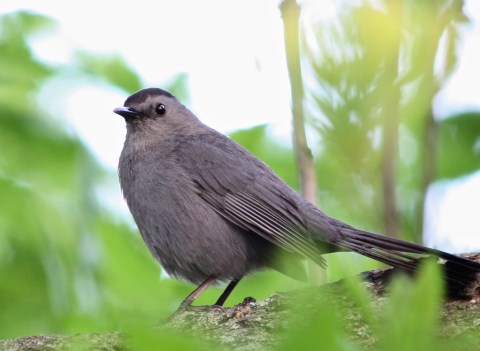Spring has finally returned to New England! It is arguably the most exciting birding season of the year, when it is possible to find over 100 species in a day with relative ease – many of them in stunning breeding plumage! And each year I organize a small group here on Cape Ann to bird for conservation as part of Mass Audubon’s Bird-a-thon. It’s great fun, involves some friendly competition, and supports bird conservation.
Here’s how it works.
This year Bird-a-thon takes place May 11-12 and consists of having as much birding fun as we can stand in the 24 hours between 6:00 PM Friday until 6:00 PM Saturday. Back in 2004, I thought it would be fun to see how many species we could find without leaving Cape Ann (Gloucester, Rockport, Essex and Manchester). In addition to the geographical challenge, this reduces birding time lost to driving (one of our team birds by bicycle!) and of course shrinks the team’s carbon footprint. In the 7 years that Cape Ann has fielded a team, we have ticked 183 species total with an average of 132 species per year –dragged down by monsoon rains in two years! In our best single year we found 156 species.
The Cape Ann Bird-a-thon team is back this year with its (catchy?) nickname, “Twitchers with a Purpose” to emphasize the fact that all funds raised will go to specific bird conservation projects. The conservation dollars that can be raised can be significant. For example, last year, Drumlin Farm’s team won the prized Hathaway Cup for raising the most money ($34,820) and a dedicated individual on that team was the statewide top fundraiser with $15,309 raised. My team is trying to hit the $5,000 mark this year.
This, as you’ve probably guessed, is where you come in by pledging to my team as generously as you can. You can either pledge an amount per bird ($1/species @ 132 species = $132) or just pledge a set amount. Pledging is a snap. Just go to my webpage:http://www.firstgiving.com/fundraiser/chrisleahy/bird-a-thon-2012 , click on the green DONATE button and just follow the simple pledging instructions. OR you can just send a check made out to Mass Audubon and designated for the Bertrand Chair (that’s me), attn: Ellen McBride, Mass Audubon, 208 South Great Rd., Lincoln, MA 01773. No gift is too small (or too large!) and all are eligible for a charitable deduction.
I hope you can help. Remember, your pledge will be dedicated to specific bird conservation efforts undertaken by my colleagues and me at Mass Audubon, such as the recently publish and authoritative State of the Birds report. I can assure you on the best existing evidence that our birds need all the help you can give them.
Thank you Chris for all you do to help the birds of Massachusetts!
 Gray Catbird
Gray Catbird
In looking through my photo library for an image for this post, I am reminded of when the Catbirds and Mockingbirds began to call our garden home–when our first batch of blackberries ripened! Catibirds dine on fruits and berries and are year-round frequent visitors to the feast we provide, including blueberry, Juneberry, winterberry, and holly berry. As the fruits of our magnolias approach their ripening time, the Catbirds noisily guard the trees in anticipation of the ripened fruit.
For more information about the Gray Catbird:
Mass Audubon: Gray Catird (Dumetella carolinensis)
All About Birds: Gray Catbird
The Cornell website has excellent crisp, clear recordings of the Catbirds “mew” sound. Anyone who has heard the repetitious male catbird vocalizing at daybreak knows exactly why they are called Catbirds. From Cornell, “The Gray Catbird belongs to the genus Dumetella, which means “small thicket.” And that’s exactly where you should go look for this little skulker.”
Love the beautiful shade of blue of Catbird eggs!
 Gray Catbird Eggs image courtesy Cornell Lab of Ornithology
Gray Catbird Eggs image courtesy Cornell Lab of Ornithology
Like this:
Like Loading...
































































